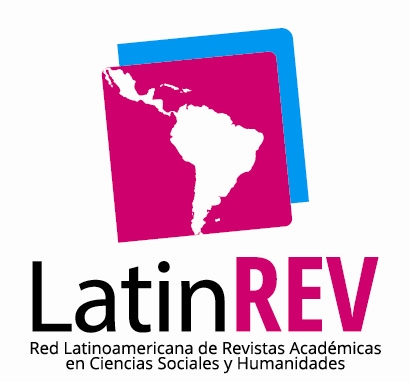Do not leave seen: the use of mobile devices in English teaching
DOI:
https://doi.org/10.35622/j.rr.2020.02.004Keywords:
Mobile learning, ICT, didactics, methodology, teaching englishAbstract
This qualitative and descriptive case study aims to analyze the effect of the implementation of mobile learning strategies to develop communicative skills in English students at the Universidad Santo Tomas. To achieve this, three important moments were defined: the first moment was to characterize some mobile learning tools such as software applications focused on the development of skills in a foreign language in order to identify their contributions to the teaching process. The second moment was to implement a mobile learning strategy to verify both: the use of ICT and the effect in the academic process. The last moment led to the analysis of information to determine the findings and the communication of conclusions. To carry out this research, it was necessary the support of 258 students, whose English level ranged between A1 and B1 according to the CEFR. The results showed that students felt motivated to learn and they had a better performance with the mediation of mobile learning strategies and tools. This research contributed to the consolidation of an ICT proposal for the Languages Institute at the university.
References
Ander Egg, E., (2000) El proceso de Globalización en la Cultura. Cuadernos Patrimonio Turístico y Cultural, N. 13, pp. 144-164.
Ahmad, K., Armarego, J. and Sudweeks, F. (2013). Literature review on the feasibility of mobile-assisted language learning (MALL) in developing vocabulary skills among non-English speaking migrant and refugee women. International Conference on Research and Innovation in Information Systems, ICRIIS. pp. 336-341. doi: 10.1109/ICRIIS.2013.6716732
Ally, M. & Prieto-Blázquez, J. (2014). What is the future of mobile learning in education? Mobile Learning Applications in Higher Education [Special Section]. Revista de Universidad y Sociedad del Conocimiento (RUSC). Vol. 11, No 1. pp. 142-151. doi http://dx.doi.org/10.7238/rusc.v11i1.2033.
Botia, A. (2002). Case of study as biography-narrative report. Revista Arbor, ciencia, pensamiento y cultura. Vol. 171, Issue 675, pp. 559-578. Recuperado de: http://arbor.revistas.csic.es/index.php/arbor/article/viewFile/1046/1053
Chen, C. M. & S.-H. Hsu. (2008). “Personalized Intelligent Mobile Learning System for Supporting Effective English Learning”. Educational Technology & Society, 11 (3), pp. 153-180.
Claro, M., CEPAL. (2010). La Incorporación de Tecnologías Digitales en Educación. Modelos de Identificación de Buenas Prácticas. Santiago de Chile, Chile: Naciones Unidas.
Del Campo Cañizares, E. (2014). M-Learning y aprendizaje informal en la educación superior mediante dispositivos móviles. Revista Historia Y Comunicación Social, 18, pp. 231-242. https://doi.org/10.5209/rev_HICS.2013.v18.44239
EF.COM.CO (2018). Inicio - EF EPI. English Proficiency Index. [en línea] Disponible en: https://www.ef.com.co/epi/downloads/
Elaish M., Shuib L., Abdul Ghani A., Yadegaridehkordi E. and Alaa M. (2017). Mobile Learning for English Language Acquisition: Taxonomy, Challenges, and Recommendations. IEEE Access, vol. 5, pp. 19033-19047, doi: 10.1109/ACCESS.2017.2749541
Flétscher, L., Morales, A. (2007) Modelo de desarrollo de servicios m-learning, una propuesta desde la concepción del servicio hacia la pedagogía. Revista Virtual Universidad Católica del Norte. Núm.22. 2007 pp. 1-22
Gardner, H., & Davis, K. (2014). La generación APP. Cómo los jóvenes gestionan su identidad, su privacidad y su imaginación en el mundo digital. Bogotá: Planeta.
Gómez, C. V., & Marta-Lazo, C. (2015). Modelo De Integración Educomunicativa de “Apps” Móviles Para la Enseñanza Y Aprendizaje. Pixel-Bit, Revista de Medios y Educación, (46), 137–153. https://doi-org.crai-ustadigital.usantotomas.edu.co/10.12795/pixelbit.2015.i46.09
Godwin-Jones, R. (2011). Emerging technologies: Mobile apps for language learning. Language Learning and Technology, 15(2). pp. 2-11 http://dx.doi.org/10125/44244
Godwin-Jones, R. (2018). Using mobile devices in the language classroom: Part of the Cambridge Papers in ELT series. Cambridge University Press
Hernández, G. (1997). Caracterización del Modelo Cognitivo. México: ILCE - OEA. Ley 115 (1994). Por la cual se expide la ley general de educación, en http://www.mineducacion.gov.co/1621/articles- 85906_archivo_pdf.pdf
Hernández. S. (2014). Metodología de la investigación. Sexta edición. México: McGraw-Hill Interamericana.
Huang, C. and P. Sun. (2010) “Using mobile technologies to support mobile multimedia English listening exercises in daily life”. In: The International Conference on Computer and Network Technologies in Education (CNTE 2010), At: http://cnte2010.cs.nhcue.edu.tw/
Ibañez, A. y Traxler J. (2016). MALL-Based MOOCs for Language Teachers: Challenges and opportunities. Porta Linguarum. Revista Internacional de Didáctica de las Lenguas Extranjeras. Monográfico I. 2016. 73-85
Klopfer, E., Squire, K., & Jenkins, H. (2002). Environmental detectives PDAs as a Window into a virtual simulated world. IEEE International Workshop on Wireless and Mobile Technologies in Education, 95-98. https://doi:10.1109/WMTE.2002.1039227
Lozano, R. (2011) De las TIC a las TAC: tecnologías del aprendizaje y del conocimiento. Anuario ThinkEPI, 2011, v. 5, pp. 45-47. Recuperado de: https://recyt.fecyt.es//index.php/ThinkEPI/article/view/30465
MEN, (2009) Organización del Sistema Educativo, [en línea] Disponible en: https://www.mineducacion.gov.co/1759/articles- 205294_archivo_pdf.pdf
MEN, (2018). Inicio - Ministerio de Educación Nacional de Colombia. [en línea] Disponible en: http://www.mineducacion.gov.co/1621/article-107522.html
MEN. (2016). La Innovación Educativa en Colombia –Buenas Prácticas para la Innovación y las TIC en Educación. Bogotá, Colombia. Recuperado de https://aprende.colombiaaprende.edu.co/ckfinder/userfiles/files/Libro%20Innovacion%20MEN%20-%20V2.pdf
Puchmüller, A. y Puebla, M. (2014). TIC en Educación Superior: usos e implicancias en dos carreras de instituciones argentinas. Revista Encuentros, 12(2). doi: 10.15665/re.v12i2.266
Rezaei A., Neo, M. and Pesaranghader A. (2013) Effectiveness of using English vocabulary mobile applications on ESL's Learning performance. Proceedings - 2013. International Conference on Informatics and Creative Multimedia. 2013, pp. 114-118.
Rodríguez, L., Vallejo G., Proaño, F., Romero, H., Solís, L., y Erazo, J. (2017). Diseño de una metodología m-learning para el aprendizaje del idioma inglés. Revista Boletín Redipe, 6(6), 35 - 48. Recuperado a partir de https://revista.redipe.org/index.php/1/article/view/241
Rosell-Aguilar, F. (2017). State of the app: A taxonomy and framework for evaluating language learning mobile applications. CALICO Journal 34(2) pp. 243-258. https://doi.org/10.1558/cj.27623
Salguero Cubides, J., (2011) Globalización. Economía y regiones de Colombia. Sociedad geográfica de Colombia.
Seiz Ortiz, Rafael. (2015) Aprendizaje móvil de lenguas basado en criterios pedagógicos. @tic. revista d’innovació educativa Universidad de Valencia. Disponible en http://www.redalyc.org/articulo.oa?id=349543461011
Taylor, S. y Bogdan, R. (1986). Introducción a los métodos cualitativos de investigación. Buenos Aires, Argentina: PAIDOS
Torrente, P. (2012) E-Learning para la enseñanza de lenguas extranjeras: factores de éxitos y desafíos., Revista Teckne, 10 (2) Págs. 54-58.
UNESCO (2013). Directrices para las políticas de aprendizaje móvil. París, UNESCO. Recuperado de https://unesdoc.unesco.org/ark:/48223/pf0000219662
Universidad Santo Tomás. (2015). Documento Marco Lenguas Extranjeras. Bogotá, Colombia: Ediciones USTA.
Universidad Santo Tomás (2015). Lineamientos para el diseño y la actualización curricular. Bogotá: Ediciones USTA.
Universidad Santo Tomás. (2016). Plan Integral Multicampus. Bogotá, Colombia: Ediciones USTA.
Published
Issue
Section
License
Copyright (c) 2020 Katherin Johanna Rodríguez-Silva, Herberth Alfonso Mendieta-Ramírez

This work is licensed under a Creative Commons Attribution 4.0 International License.




















